Geneva. Frankfurt. Detroit. Paris. Almost all of the great motor shows have withered on the vine, or simply been allowed to die altogether. Once upon a time, three times a year, we could be assured of the world’s biggest car makers gathering at those locations, showing off their latest wares, and their futuristic concepts.
One by one, they have been reduced. Geneva this year, once the most important show of them all, faltered to a mere handful of stands and one major new car reveal — the new Renault 5.
As with manufacturing, economics, and arguably politics, the centre of gravity has moved eastwards. To Beijing, specifically, where the 2024 Beijing motor show looked and felt exactly like those grandiose European shows of old.
You want car brands? We’ve got them — Ford, Honda, Lincoln, Chevrolet, BMW, Mini, Volkswagen, Nissan, Bentley, Land Rover, Jaguar, Lexus, Toyota and so many more. And then there were the Chinese players, bigger and more influential than ever before.
READ MORE
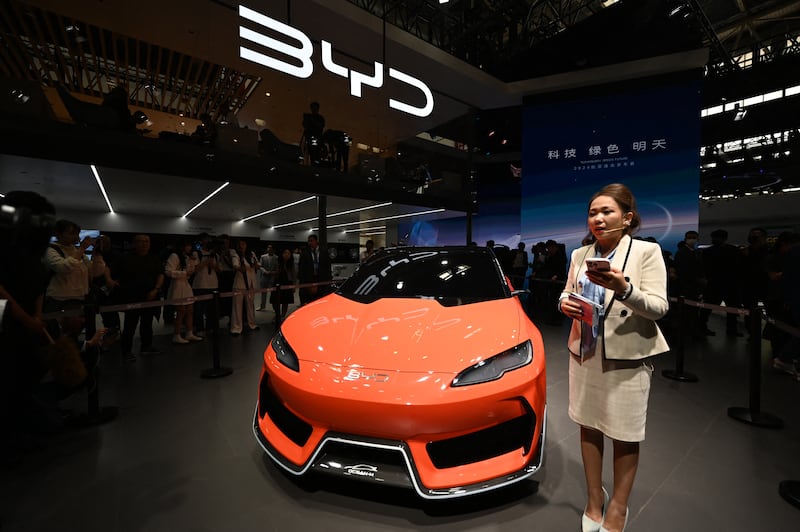
Was BYD — Build Your Dreams — the star of the show? Well, it certainly had a good swing at it, launching so many new models across four brands that it required four separate stands to hold it all. A small confession; BYD invited me to the show, put me up and fed me, but there’s no question that this massive brand is aiming to do in Europe what it’s already done in China, sales-wise.
Under the BYD brand itself, the company showed two new plug-in hybrid saloons, using its DM-i technology that pairs electric motors and a large ‘Blade’ battery with a 1.5-litre petrol engine. The plainly-named L DM-i looks like BYD’s answer to the Toyota Camry, and is unlikely to make it to Europe, but the mechanically-identical Seal 6 DM-i should reach these shores eventually. It’s named to slot into a growing Seal lineup. We already have the impressive fully-electric Seal saloon in Ireland, and that will shortly be joined by the chunky-looking Seal-U DM-i plug-in hybrid SUV.
Technical details are still scarce, but using the same DM-i hybrid setup as the Seal-U means that the attractive Seal 6 saloon should manage at least 100km, maybe 120km, on a full electric charge and potentially manage solid fuel economy on longer runs.
Not enough Seal for you? That’s okay, because BYD has another one — the fully-electric Seal 7 takes the styling of the Seal saloon and stretches it upwards, turning it from a four-door sedan to a sleek fastback ‘coupe’ SUV, with a roomy interior and a large 500-litre boot (plus a massive ‘frunk’ storage area in the nose that big enough to cope with all the charging cables you can throw at it). It’ll come to Ireland in 2025, and packs a claimed 500km range from its 93kWh ‘Blade’ lithium-iron phosphate battery, which can charge at up to 250kW on DC power.
Finally, there was a bright orange electric hot hatch, called the Ocean-M concept, which looks very much like a tilt in the direction of Cupra, with its massive carbon-fibre rear wing and chunky body kit.
Across the aisle, at Yangwang, BYD possibly had the outright star of the show. Yangwang is BYD’s super-luxury brand, and is currently only sold in China. So far, it’s best known for the hulking U8 SUV (which can both ‘tank turn’ and in an emergency float on water, but not at the same time) but now, it’s going after Mercedes, BMW, and Maserati with the new, sleek, U7 saloon.
A sexy four-door, that borrows the front styling of Yangwang’s U9 electric hypercar, it uses four electric motors to develop a whopping 1,300hp and can hit 100km/h from rest in 2.9 seconds (not that you’ll want to do that more than once).
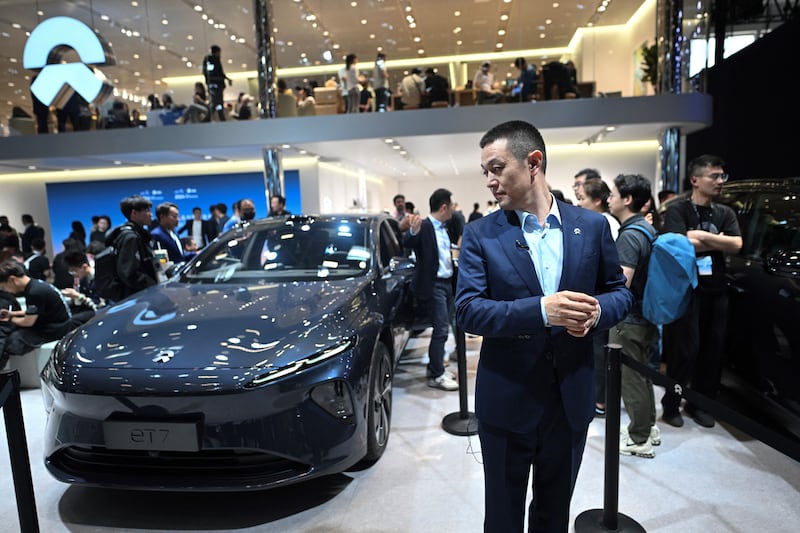
There’s more clever stuff here than mere sledgehammer performance, though. The suspension is also fully adaptive, and controlled by electric actuators rather than air springs or hydraulics. Because the springs and dampers are electrically connected, it means that they can transfer energy back to the battery, generated by their rebounding and responding to the road surface. Yangwang hasn’t confirmed that it’s coming to Europe yet — and it would likely need a re-brand to make it palatable to Europeans — but it certainly shows the depths of engineering that it can deploy.
If you want a high-tech Chinese brand that is coming to Europe, then there’s always Denza, which is a co-operation between BYD and Mercedes. Its latest model — designed, as is the Yangwang U7 and the BYD lineup — by ex-Audi designer Wolfgang Eggers, it’s a handsome five door fastback saloon that just happens to be packing 965hp from three electric motors (one front, two rear). Denza should launch in Europe later this year, and it will probably also include models from BYD’s other brand, Fengchangbao.
The first of of these, the Bao 5 (it translates as Leopard, more or less) is a hefty Toyota Land Cruiser rival, again with plug-in hybrid power and with an option to fit the same adaptive suspension as you’ll find in the Yangwang models. At Beijing, it was joined by two more cars — the Bao 8 (a six or seven-seat SUV flagship), and the Super 3 concept, which previews a rugged-looking Nissan Qashqai rival. There was also the roofless, windscreen-less Super 9 electric sports car, but this seems to be more of a flight of fancy than the big off-roaders.
Away from these BYD-centric stands, there was much talk of the company’s ability to develop a new car in as little as 14 months. One chief executive of a major European car maker, who will have to sadly remain nameless, said that BYD “will soon learn all about making and selling cars in Europe”, referencing the company’s plans for one, possibly two, European factories and its ambition for a ten per cent market share before 2030.
Luca De Meo, the chief executive of the Renault Group, was more openly admiring of the ability to develop a new car so fast, but told The Irish Times that: “It’s like Lego. To develop a car that fast they are taking parts off the shelf. We can do this too now, with our new platforms.”
BYD was even dominating the show in parts where it wasn’t showing a new car. Across at the Toyota stand, the Japanese giant was launching two new electric models into the Chinese market — the bz3C and bz3X, respectively a sleek fastback saloon and a medium-sized crossover.
Significantly, both cars use batteries developed in association with BYD, which will hopefully offer an improvement on the generally poor one-charge range seen in Toyota’s home-grown bz4X electric crossover. There’s no confirmation if either of these new models will come to Europe, however.
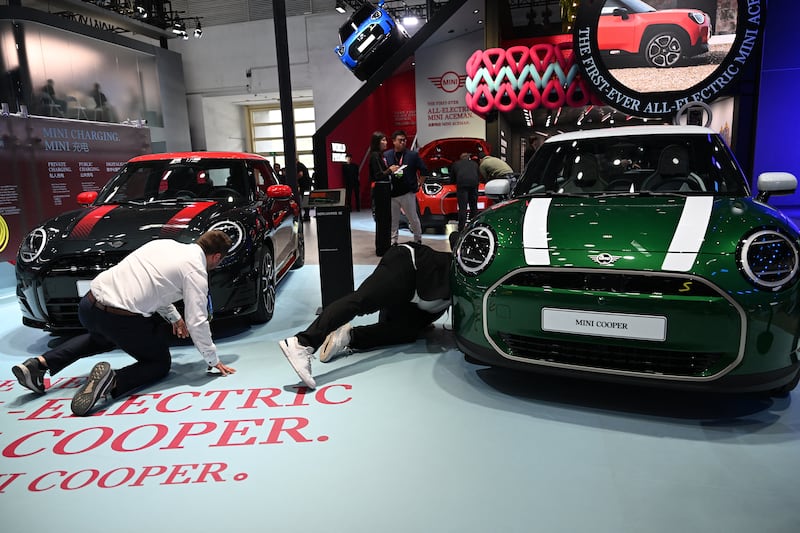
Mini showed the production version of its new Aceman — a low-roofed crossover that slots between the Mini hatchback and the Countryman SUV, and offers as much as 400km of range with a roomier interior than the tiny hatch. It’s a replacement for the old Clubman estate, but it’s quite compact, measuring barely any more in length than a Renault Clio.
Nissan also unveiled new electric models, showing off four ‘new energy’ models in Beijing — two saloons and two crossovers — but alas both were concept models and not full production cars.
Volkswagen was on the concept car trail too, showing off the ID.Code concept, a very un-adorned electric crossover which was described to us as being a bit like a ‘pizza base.’ The plan is that the Code will form the basis for a whole series of further concept cars later this year, shared between Volkswagen’s Chinese production partners, but it will also have at least some influence on future production cars for Europe. Expect the next-generation ID.4 to pick up some of the very clean styling cues from this concept.
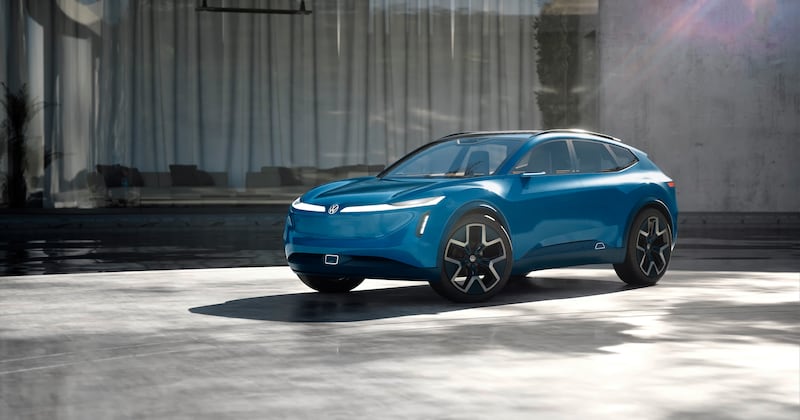
It’s almost impossible not to circle back to BYD, though. Back on the brand’s stand sat the diminutive Seagull, a city-car sized electric hatchback with enough battery capacity for a 300 or 400km range, depending on the model. It sells for as little as the equivalent of €10,000 in China, and BYD confirmed, in the run-up to the show, that it will come to Europe, and with right hand drive.
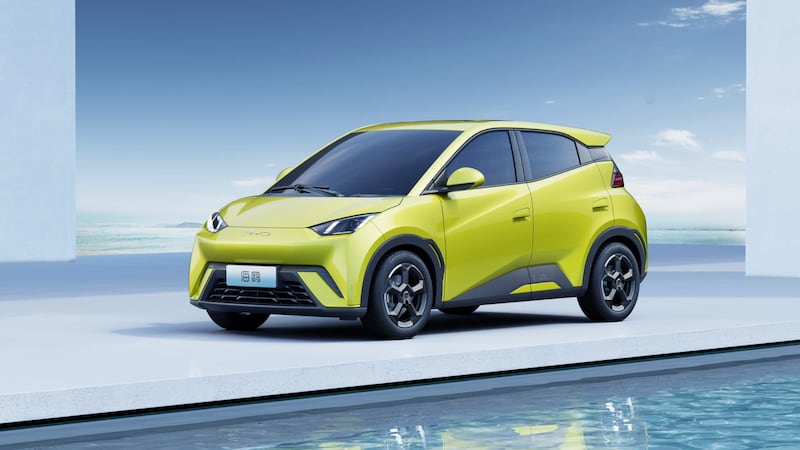
And a €10,000 price tag? That’s far less likely. While the interior of the Seagull impresses with its relatively high quality look and feel (certainly compared to what you might expect) it will have to be significantly re-engineered to meet European requirements, even if BYD already accepts that it’s unlikely to get a full five-star rating on the Euro NCAP crash test. Expect to see a revised Seagull on sale here most likely some time in 2026.
Heading back out onto the perennially traffic-choked streets of Beijing, it’s hard not to conclude that this city needs a show promoting car ownership like it needs a collective hole in the head, but there’s no denying that if you want to be taken seriously in the modern motoring world, you’re leaving Geneva well and truly in the rearview mirror, and heading for Beijing.
- Sign up for push alerts and have the best news, analysis and comment delivered directly to your phone
- Find The Irish Times on WhatsApp and stay up to date
- Listen to our Inside Politics podcast for the best political chat and analysis















